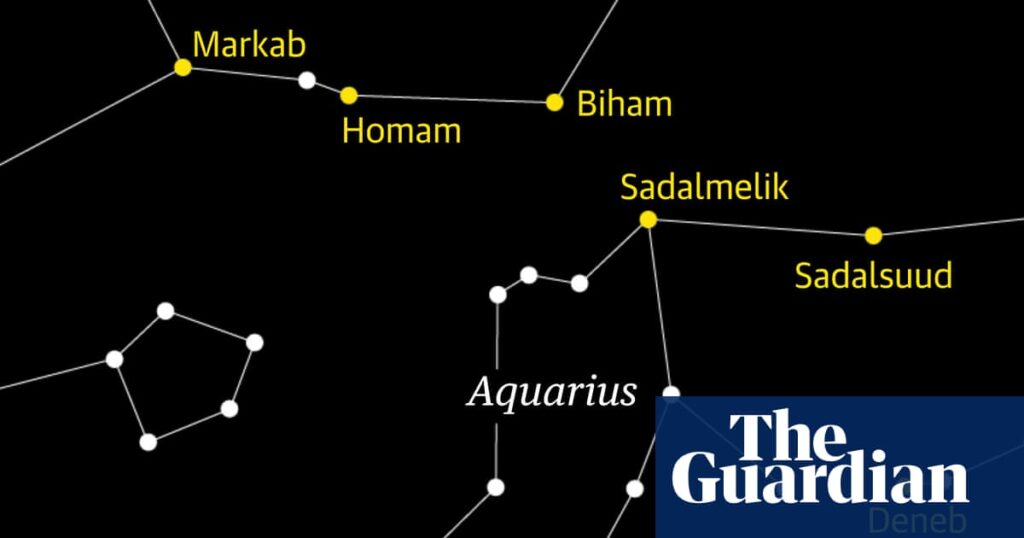Start watching for the Delta Aquariids meteor shower this week. The chart shows the view looking south-east from London at midnight on 28 July. The radiate is marked. This is the point from which the meteors appear to radiate in all directions.
Most annual meteor showers have a well-defined peak of activity, but the Delta Aquariids are a more drawn-out affair. Although the predictions place the peak somewhere between 28 and 30 July, the activity can be just as strong leading up to and after the moment.
The moon will have set by midnight, meaning that even faint meteors will be visible. The maximum hourly rate lies in the 15-to-20 range, but these meteors are known to sometimes leave persistent trails in the sky that can be seen for minutes after the bright flash of the shooting star has passed.
Generated from dust that was once in the tail of comet 96P/Machholz, the Delta Aquariids are just one meteor shower that it could have generated. The Arietids, a rare daytime meteor shower, may also have come from the same comet.
The Delta Aquariids are more favourably placed in the southern hemisphere’s skies, but observers in both hemispheres can enjoy the event.


